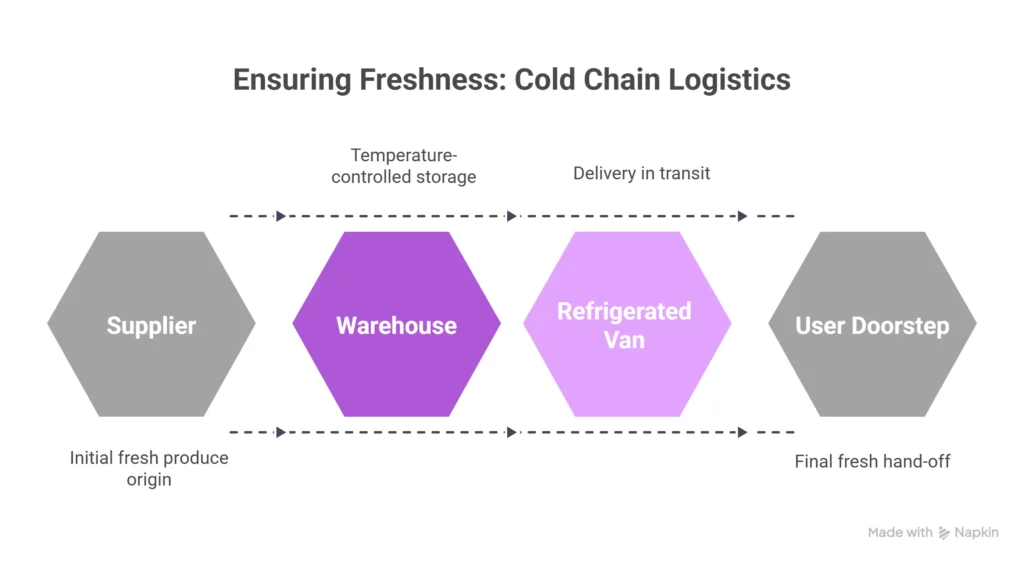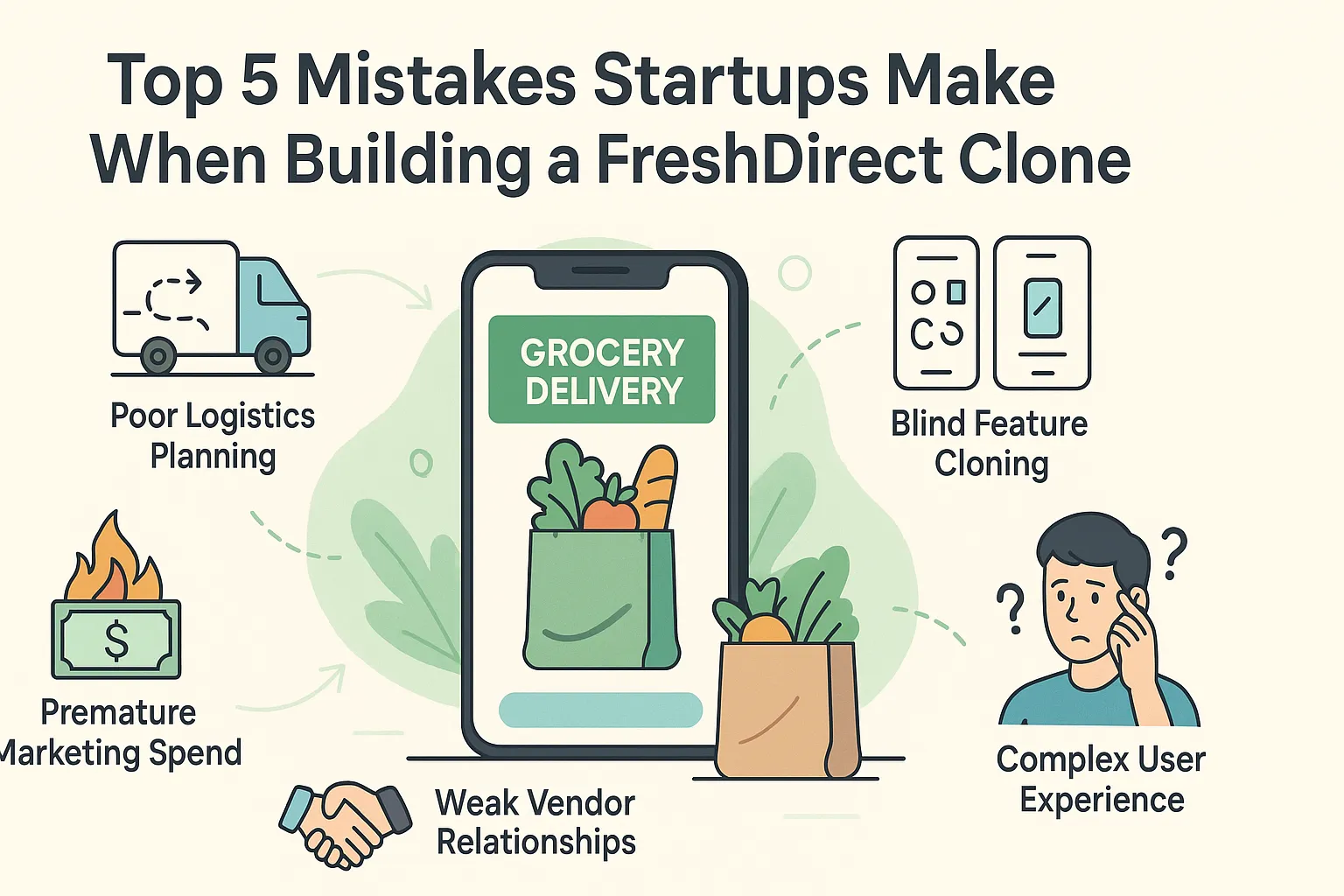If you’re eyeing the online grocery delivery space in 2025, you’re definitely not alone. With more consumers demanding doorstep convenience and fresh produce at lightning speed, startups across the globe are scrambling to launch their version of a FreshDirect clone. The pandemic may have jumpstarted the craze, but consumer behavior has evolved—there’s no going back. The online grocery game is hotter than ever, and entering it requires more than just ambition—it demands precision.
Now, I’ve seen this first-hand. A close friend of mine launched a grocery delivery app last year. It looked slick, had local partnerships, even ran some social media ads—but six months in, it collapsed. Turns out, they missed a few key steps that made all the difference. Watching them burn cash on avoidable mistakes made me realize how many first-time founders rush in without knowing the pitfalls.
That’s exactly why this blog exists. Whether you’re a seasoned entrepreneur or a first-time founder, you’ll walk away knowing the most common (and costly) errors startups make when cloning FreshDirect. From ignoring logistics to copying features blindly, we’ll dissect each misstep so you don’t repeat them. You’ll also get actionable insights that can steer your grocery delivery app towards success.
So grab a cup of coffee—or maybe a kale smoothie—and read on. Trust me, saving 5 minutes now could save you 5 figures down the road.
Mistake #1: Underestimating the Complexity of Grocery Logistics
Most founders think grocery delivery is “just like food delivery, but with more SKUs.” That’s a dangerous oversimplification. Fresh groceries mean temperature-sensitive goods, tight delivery windows, and a serious need for real-time inventory management. Spoiled milk? That’s a refund. Missed time slot? That’s a lost customer.

You need to invest in cold storage, local warehouse zoning, and last-mile routing algorithms. And if your app doesn’t reflect live stock and availability, expect frustrated users abandoning carts mid-checkout.
Mistake #2: Cloning Features Without Understanding Why They Work
Many startups blindly copy FreshDirect’s interface and features, assuming that’s the golden formula. But guess what? What works for a New York-based enterprise doesn’t automatically translate to Delhi, Lagos, or Jakarta. Local context matters.
You need to adapt based on local dietary habits, available produce, payment gateways, delivery preferences—even language. What if your audience prefers COD? Or WhatsApp ordering over in-app browsing?
Mistake #3: Burning Cash on Marketing Before Perfecting the Backend
Early-stage startups often splurge on Instagram ads and influencer shoutouts before their delivery system even works right. What’s the point of driving traffic to an app that fails during checkout or crashes on weekends?
Your marketing funnel means nothing if your operations can’t handle 50 orders an hour. Focus first on your product-market fit, backend scalability, and support channels. Check out how we help startups build smarter solutions at Miracuves.
Mistake #4: Ignoring Supplier and Vendor Relationships
Behind every fresh tomato is a tired vendor who delivered it at 4 AM. Startups that treat suppliers like background characters end up with poor quality, inconsistent stock, and late deliveries.
You’ve got to build trust. Offer transparent pricing, easy dashboards for vendors, and flexible payout systems. FreshDirect didn’t just build an app—they built a supply chain. CB Insights: Why Most Grocery Delivery Startups Fail
Mistake #5: Overcomplicating the User Experience
Some founders think adding 15 features—live chat, AI nutritionist, loyalty games—makes their app better. Nope. It makes it confusing. Users just want to pick groceries, pay, and get them fast. Period.
Simplicity is king. Keep your onboarding flow short, your product categories clear, and your checkouts smooth. Optimize for speed, not novelty. Want expert help building a clean, scalable grocery app? Talk to us.
Conclusion: Play Smart, Not Fast
Startups chasing the FreshDirect dream often sprint out of the gate—and crash just as fast. But if you avoid these five rookie mistakes, you’re already way ahead of the curve. Remember, it’s not about copying what exists—it’s about building what your audience truly needs.
And here’s a pro tip: take time to study your local market, partner with the right logistics players, and keep your app stupid simple. Fresh groceries are hard enough—don’t make the tech harder.
The future of grocery delivery lies in personalization, AI-powered stock prediction, and zero-waste logistics. If you can master the basics now, you’ll be ready to scale when the tech tide rises.
FAQs
Q1. What’s the biggest hidden cost in building a FreshDirect clone?
Cold chain logistics and real-time inventory management—both require serious infrastructure and tech.
Q2. Should I launch with a full-blown app or start small?
Start lean. Launch a PWA or MVP to test your concept before investing in native app development.
Q3. How important is UX in grocery delivery apps?
Crucial. If users can’t find what they need in 3 taps, they’re gone.
Q4. Can I use the same model in rural and urban areas?
Not effectively. Delivery patterns, availability, and user behavior vary wildly—customize accordingly.
Q5. Is it okay to copy features from competitors?
Use them as inspiration, but always validate if they’re relevant to your market and users.
Q6. How soon should I monetize?
Once your app works seamlessly and you have repeat users—don’t rush it.








